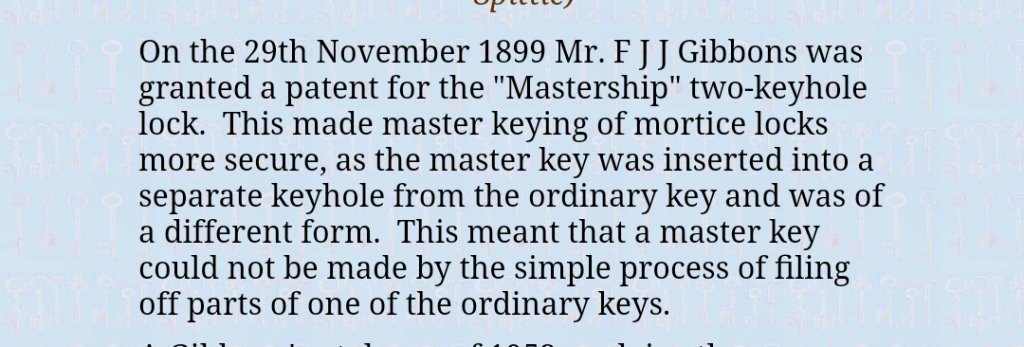Locks don’t have to be hard to pick to be interesting, and a Lips lock Jos loaned me is a fine example of that.
Lately I’ve been drawn to picking lever locks, as they have that nice “Skyrim” vibe. You can get a long way with just some bent wires. Knowing that, Jos brought this nice Lips lock to a Toool meetup, and I got to play with it a little.
Picking it is pretty straightforward, as there are no false gates on the lever, and no curtain. The pin in the keyway does make navigation a bit awkward, but all in all it’s not hard to pick.
Things get more interesting when you take a closer look at the lock.
First of all, it’s a Lips lock. Lips is a Dutch lock manufacturer that was founded in Dordrecht in 1871 by Jacobus Lips. In 1971 it became part of Chubb, and since 2000 it’s part of the Assa Abloy group.
The second name on the lock is P.G.E.M. The P.G.E.M. (or Provinciale Gelderse Energie Maatschappij) was a utility company delivering electricity and gas to the whole province of Gelderland in The Netherlands. Every Dutch province used to have its own utility company. It was owned by the province, and the local municipalities.
In the 1990’s the Dutch government decided all the utility companies had to be privatized, and P.G.E.M. became part of Nuon (which is now a part of Vattenfall).
Below P.G.E.M. are the letters LS, that stand for Laagspanning or Low Voltage. PGEM used these locks to secure electrical substations, and LS indicates this particular lock was used on a low voltage substation. The other side of the lock tells us more about this.
Here we see “Onderstation Woudhuis” written in pencil. Onderstation Woudhuis is a substation located in the city of Apeldoorn.
The double keyway is a striking feature which reminds of dual custody locks, only this isn’t that. It’s shared access, where only one of both keys is required to open the lock. This becomes clear when the faceplate is removed.
This seems to be a form of master keying without having to need to add extra gates to the levers, which would compromise the security of the lock.
Every lever has two cuts at the bottom. A closer look at two of the levers shows how different cut heights make it possible to open the lock with two different keys.
Moral of the story: locks are fun in so many ways.
~Greenish
After posting the original blog, a good friend in the UK shared a page with the patent of the ‘Mastership’ two keyhole lock from 1889. http://www.historywebsite.co.uk/Museum/locks/gazetteer/gibbons/gibbons6.htm

